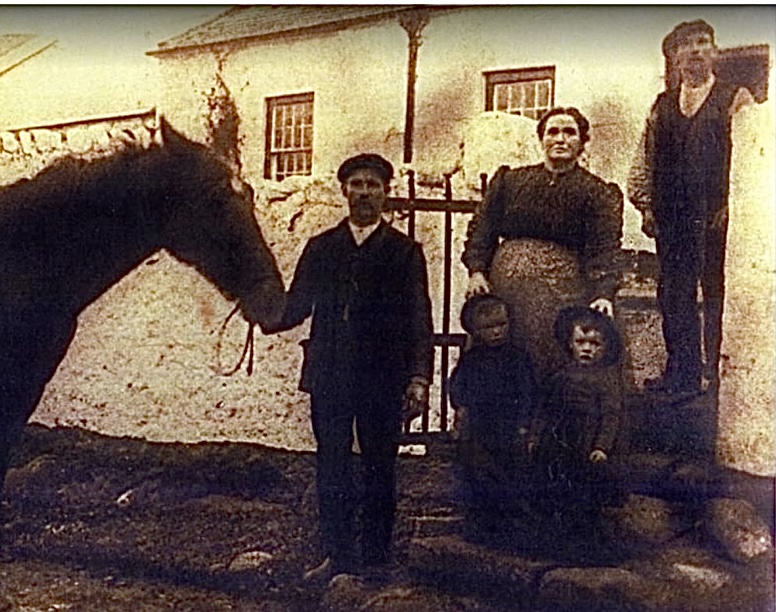De-colonising the Human and Natural Landscape

De-colonising the Human and Natural Landscape
We view both natural and human landscapes in Ireland through colonised eyes.
Recent controversy regarding the construction of a fixed bridge over the Newry estuary and the associated environment impacts such as increased atmospheric pollution, nitrogen deposition and habitat destruction, has brought a certain ecological and cultural ignorance to the fore. I don’t disagree that the construction of a bridge to ‘alleviate congestion’ will cause environmental destruction and the whole debate is beyond the scope of this blog, however, I take issue with the importance people place on certain habitats or landscape features.
One of the arguments against the relief road is that it will compromise the natural beauty of Benson’s Glen in Fathom (pictured in the banner). Benson’s Glen is a wooded ravine which runs west to east along the ridge that makes up Fathom on the western side of the Newry estuary. Benson’s Glen is well-known by the people of Newry, in part because of the presence of a 19th century folly within the glen. The glen is dominated by beech trees and the origins of the glen for how we know it today, is directly linked to the Benson family.
The Benson family were settlers that were given land in the Newry area by the wealthy Ogle family who owned what was called Fathom Park. These families did not simply acquire this land; it was stolen from the native people. During the 18th and 19th centuries, English settlers in Ireland, demonstrated their wealth by creating parks and gardens for their own leisure, full of plants from around the world in order to quench the rich Victorian thirst for the ‘exotic’. Beech trees are characteristic of lowland England and continental Europe, where it is generally less ‘Atlantic’ compared to Ireland. Perhaps home-sick, the landed families emulated their lowland forests and parks back home in southern England, here in Ireland – the colony to the west.
I have a particular connection to the Benson family. Some of my ancestors lived in Fathom and on the Griffith Valuation (a great genealogical resource, but a colonial project itself) my 3rd-great grandfather Michael Hollywood (his son and daughter are pictured below), was a tenant of two Benson ladies in the mid-19th century down on the Fathom Line at the bottom of the glen. My family once owned land here and instead they were paying money to settlers that benefitted from the forced removal of the local communities and the exploits of the British Empire.

Owen Hollywood (probably holding the horse) and sister Alice, children of mentioned Michael. The house pictured is most likely on Kate Linnegan’s Loanan in the townland of Drumalane, near Benson’s Glen.
The process of anglicisation did not just impact our place names and our personal names, colonisers made sure our physical landscape was anglicised. Beech arrived in the 16th century, and by the 19th century, it was found all across the country, planted en-masse by estate owners and it soon changed our perspectives of woodlands in Ireland. When we study our native place names, we notice that beech is not mentioned (just like sycamore, rhododendron, giant hogweed or any other non-native/invasive plant we deal with today). Our place names instead recite images of Doire Mór (large oakwoods), Leamhchoill (elmwoods, often anglicised as the crude long-field) and Corr Fhuinseogach (the ridge of the ash) – townlands found in the Newry region.
The link between ‘natural’ landscape features and colonisation is international and the power of language loss in severing a peoples’ connection to native ecosystems is monstrous. Benson’s Glen and by extension, any beech woodland in Ireland, represents the landed gentry and their role in colonialism. When I see beech woodlands I think of the hardships my ancestors endured to survive on their own land. Beech trees are beautiful, they become rich in character as they age, but they are not a part of the native landscape in ecological or human terms. I do not suggest that they serve no ecological benefit since they support saprophytic invertebrates and fungal communities, but we must be holistic. If we accept beech as our own, where will Sitka spruce and Himalayan balsam fit? Our native woodlands of oak, hazel and ash provide essential ecosystem services which support native biodiversity. There is also the argument that which climate change, beech will become more suited to Ireland, however, with climate projections showing that Ireland will become wetter and stormier, I doubt beech will tolerate those conditions. Leave that to the crainn darach.
I cannot tell people that they cannot admire something in their landscape, but I believe it is important to place everything into ecological context, since ecology is history. I would much rather see Benson’s Glen dominated by mature oaks (of which there are a few) with a rich understory of holly, hazel, bramble, woodrush and many other native plants. Instead, the beech trees cast immense shade, which Ireland’s native flora are not fond of. The being said, I don’t want the glen damaged, I want it restored!
More strength to the local communities of Carlingford Loch for standing up to environmental injustice and rampant capitalism. De-colonise your mind and de-colonise our landscapes!